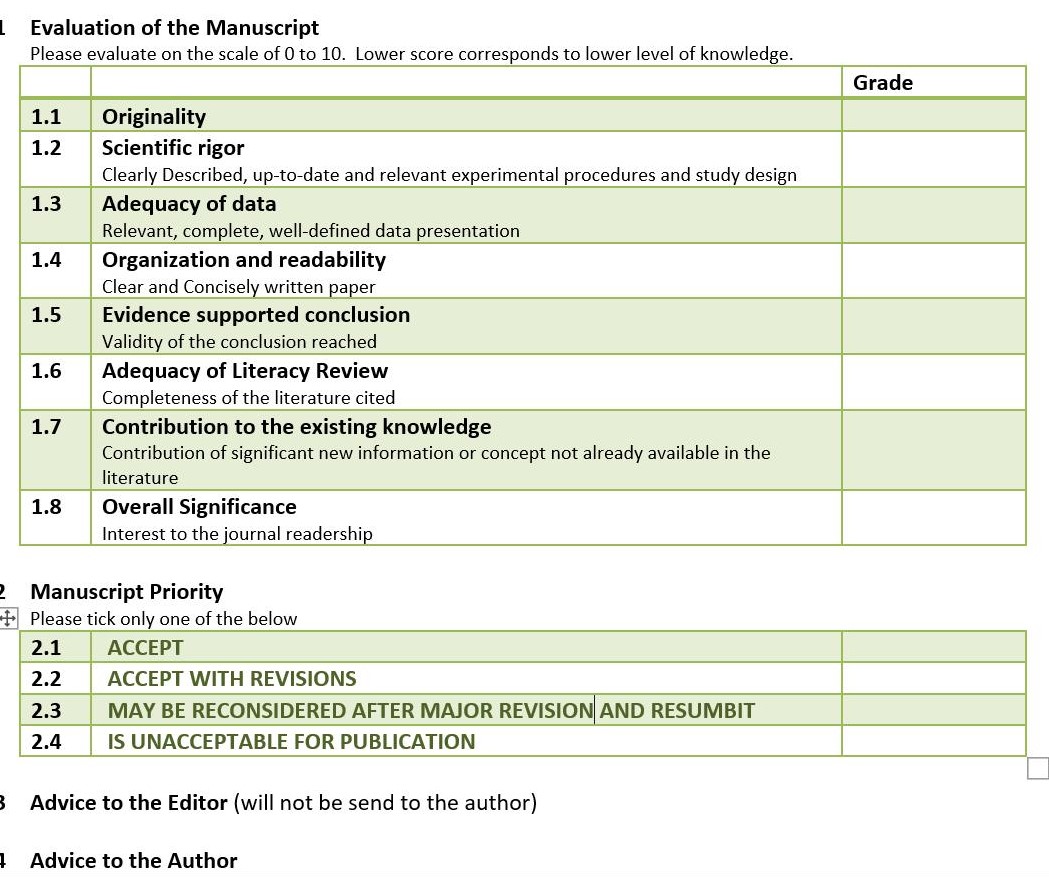Established in 2007 and hosted by Ubiquity.
Managed by Tribhuvan University Central Library.
Nepal Journals Online (NepJOL) is a service to provide online publication of Nepalese journals. For more information about NepJOL and how to join the service, see the About page.
Guidelines for Reviewers
Please consider the following aspect before reviewing the article:
-
Does the article that you need to review match your area of expertise? If you receive a manuscript that doesn't relate to your area of expertise. please notify the editor as soon as possible. Please feel free to suggest a different person in your contact and include their email and phone number.
- Do you have time to review the paper?
Reviews of articles should be finished within a two-week period. If you don't believe you can finish the review in two weeks’ time, please inform the editor and, if you can, recommend a different reviewer of your contact with their email and phone number. Please get in touch with the editor as soon as possible if you agree to review the paper but will not be able to complete the assignment before the due date.
- Are there any potential conflicts of interest?
Although conflicts of interest won't prevent you from reviewing the manuscript, it's still important to let the editors know about any prior conflicts of interest. Please do not hesitate to get in touch with the editorial office if you have any inquiries about potential conflicts of interest.
The Review Process
When reviewing the manuscript submitted to you for the peer-review, please keep the following point in mind:
- Content Quality and Originality,
- Is the article sufficiently novel and interesting to warrant publication?
- Does it expand the body of existing knowledge?
- Does the article meet the requirements of the journal?
- Does the research question have any significance?
- It might be beneficial to think of the research in terms of what percentile it is in order to assess its originality and suitability for the journal.
Organization and Clarity of the Manuscript
Title: Does it clearly describe the article?
Abstract: Does it reflect the content of the article?
Introduction: Does it describe what the author hoped to achieve accurately, and clearly state the problem being investigated?
Normally, the introduction should summarize relevant research to provide context and explain what other authors' findings, if any, are being challenged or extended. It should describe the experiment, the hypothesis, and the general experimental design or method.
Methods:
- Does the author explain the research design?
- Does the author accurately explain how the data was collected?
- Is the design suitable for answering the question posed?
- Is there sufficient information present for you to replicate the research?
- Does the article identify the procedures followed?
- Are these ordered in a meaningful way? If the methods are new, are they explained in detail?
- Was the sampling appropriate?
- Have the equipment and materials been adequately described?
- Does the article make it clear what type of data was recorded; has the author been precise in describing measurements?
- Does the author use appropriate statistical methods in the research?
Results: This is where the author/s should explain in words what he/she discovered in the research. It should be clearly laid out and in a logical sequence. You will need to consider the following aspects:
- Does the data is presented appropriately in tabulated and graphical ways?
- Does the author accurately use the statistical method which is stated in the methods section?
- Are the statistics correct? If you are not comfortable with statistics, please advise the editor when you submit your report. Interpretation of results should not be included in this section.
Conclusion/Discussion:
- Are the claims of the author (in this section) supported by the results stated in the result section of the manuscript?
- Does the conclusion seem reasonable?
- Have the authors indicated how the results relate to expectations and to earlier research?
- Does the article support or contradict previous theories?
- Is there an appropriate justification
- Does the conclusion explain how the research has moved the body of scientific knowledge forward?
Tables, Figures, and Images:
- Are they appropriate?
- Do they properly show the data?
- Are they easy to interpret and understand?
Scope - Is the article in line with the aims and scope of the journal?
Source Elsevier Guidelines for Reviewers
Reviewers are also requested to go through the ICMJE and COPE guidelines for peer reviewers.
Reviewers are requested to submit their feedback based on the IJOSH peer review format below. The form is accessible to the reviewers during the online submission of the comments.





